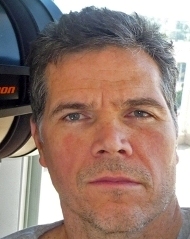Client: City of San Diego
Primary Collaborators: Phyllis Chapin (San Diego); Sophia Bhatia, (SDDPC)
Work Scope: Intergraph Software Acceptance, Training Program Development, Software Implementation and Rollout
1995 - 2000
Technical Lead & Project Management for Intergraph Software Acceptance, Training Development and Staff Training
My responsibilities and titles varied over my five years working to support the City of San Diego. One thing was consistent: my time was spent on the floor amongst the primary production team rather than at the distant SDDPC office. Better faster service.
I moved here from Orlando, FL for two projects: InSewer/GIS Integration and Storm&Sanitary Initial Implementation.
The InSewer/GIS Integration was mandated by the EPA as part of their permission for San Diego to perform Advanced Primary Wastewater Treatment rather than full-scale Secondary Treatment. Brad Lind was technical lead directly from Intergraph. I worked with him to intergrate the database-based InSewer design package with the City's GIS systems (where we explored the gap between "in theory" and "in practice"). Brad became my manager at San Diego Data Processing around four years later.
One lesson that I learned about this: government has a reputation for being, um, slow and inefficient, but it does have the capability to do Big Things without an immediate ROI.
The Storm&Sanitary Initial Implementation is significant enough to me that I wrote a detailed article about it.
The InRoads Storm&Sanitary rollout was exciting because it was a full rewrite for the InSewer and InFlow packages into a "modern" architecture: no need to run an external runtime database engine to run the CAD. Easier setup, actually achievable troubleshooting, and a whole new interface.
Because the code was new, I worked closely with my old boss at Intergraph, Steve Stanfill, in certifying the software. I love it when goodbyes become "it's great working with you again!"
This was the last major project I performed for the City prior to starting my own InRoads and Storm&Sanitary consulting business. I committed to developing the training and "training the trainers" prior to departure (giving several months "notice" to my management at SDDPC as well as City Management).
My secondary responsibilities covered areas well within my core competencies - like MicroStation configuration and InRoads Training. I helped push the MicroStation team from "everything in one config.dat file" to the 5-layered architecture that Bentley specifically designed to facilitate configuration in large heterogeneous enterprises.
Writing an InRoads Training Manual for a specific customer (the City's Street department) rather than for broad use actually prompted me to go into business on my own. A better design and 10% more effort would be "sellable" to the entire Total Addressable Market. Twenty Birds with 1.1 stones.
I also got to work with such outlying (to me) software as Omni-Pipe because I was "the engineer".
Project Management
I was responsible for project scoping and delivery. For the first three years, I worked under Sophia Bhatia's project management, while working directly with her and Phyllis Chapin (City). I then took over her Project Mangement responsibilities and was crowned with the Project Manager title. The primary contract was Engineering Application Support Services - in 1999 the budget was $384,000.
At my final year at SDDPC, I chose to relinquish most of my Project Mangement title and the paperwork responsibilities. Why? SDDPC was extremely top heavy with Account Managers and very lean on InRoads and Drainage Engineers (as in: none other than me). I could ensure a happy client if I used a readily avaialble PM rather than train up the (limited) staff I was offered. Normally, I am all about "training up", but I didn't see a success path with that option.
For many years, the City has been languishing on old software and old processes. Once the the San Diego Data Processing Corp was dissolved and their software support services taken over by an IT company, they've suffered from a lack of proactive leadership for the City (sorry, you can't have Engineering Software leadership without Engineering Software leaders immersively and proactively engaging in your environment).
While my role at Bentley is supposed to be 100% general training development, the City's success is personally important to me. I worked with the Account Manager to work directly with the City to help move the Migration to OpenRoads contract forward. I performed discovery interviews and helped lead in the development of the migration goals and deliverables scope. I am currently working with their sanitary and storm designers to train the softare and define migration standards.
An interesting note: most of the folks I knew well in 2000 can't be found. They've retired, I'm still working. Hmmm.... One of the reasons I left was that I wanted fast, edgy, broad and exciting. Hmmm... It was a good call. The past twenty years has been all those things. And I do like saving people time.
